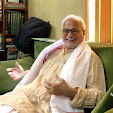The blurry boundary between premodern and modern
I’ve been thinking a lot lately about two excellent books on very different topics, both of which I’ve written about at Love of All Wisdom before: Andrew Nicholson’s Unifying Hinduism, and Brian Tierney’s The Idea of Natural Rights.
The idea of human or natural rights has often been taken as something nearly eternal, dating back into antiquity. More careful scholarship, most notably that of Michel Villey, shows us it is not that. Villey takes the work of William of Ockham as a breaking point, a sharp rupture from the previous world that had no concept of rights, which brings in a very different metaphysics where rights now play an important role. The brilliance of Tierney’s work is to qualify this point, showing a gradual transition from the world before Ockham to the world after him. It preserves Villey’s basic point that rights do not go back to antiquity, but shows that the boundary between premodern and modern is much blurrier than previous scholarship had imagined.
The idea of Hinduism has often been taken as something nearly eternal, dating back into antiquity. More careful scholarship, most notably that of Wilhelm Halbfass and Heinrich von Stietencron, shows us it is not that. Halbfass takes the work of Rammohun Roy as a breaking point, a sharp rupture from the previous world that had no concept of Hinduism, which brings in a very different metaphysics where Hinduism now plays an important role. The brilliance of Nicholson’s work is to qualify this point, showing a gradual transition from the world before Roy to the world after him. It preserves Halbfass’s basic point that rights do not go back to antiquity, but shows that the boundary between premodern and modern is much blurrier than previous scholarship had imagined.
“William James: Politics in the Pluriverse” by Kennan Ferguson
Posted on April 29, 2015

No comments:
Post a Comment